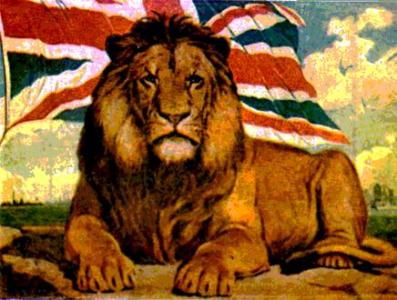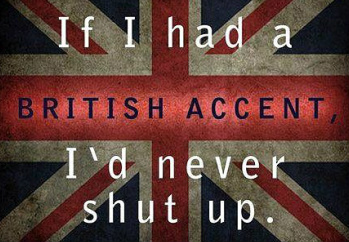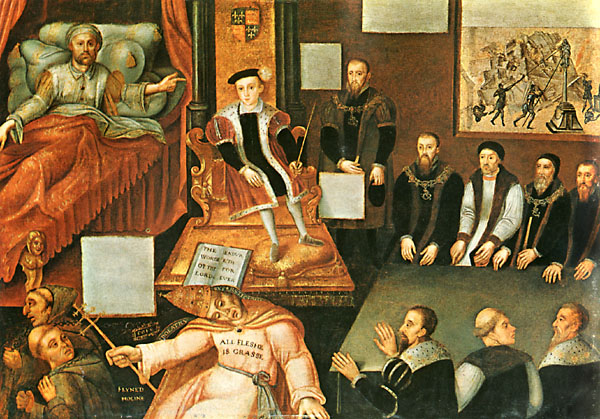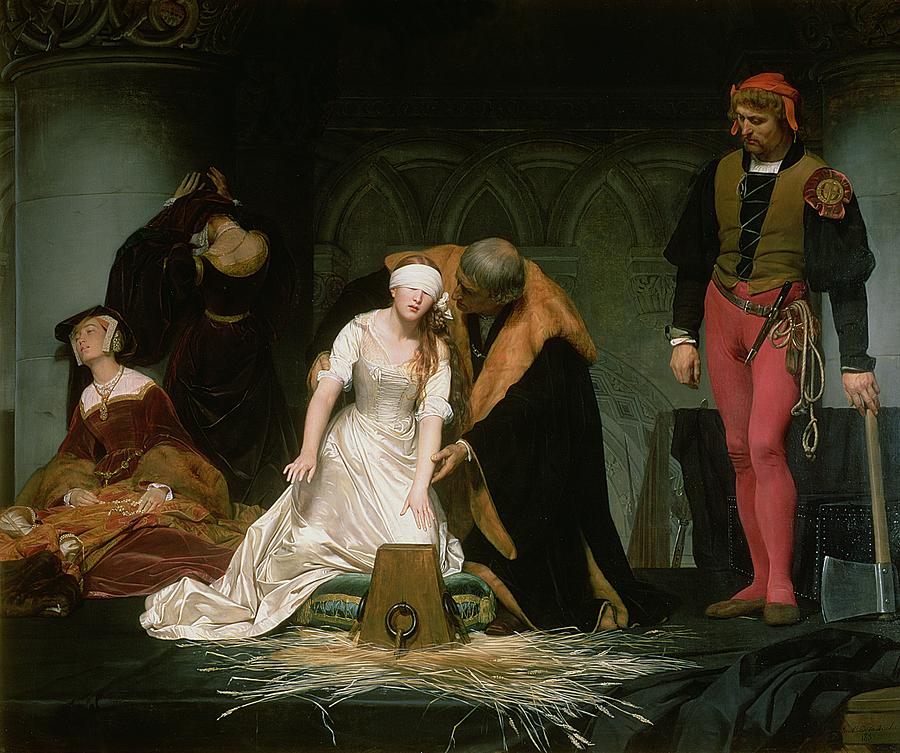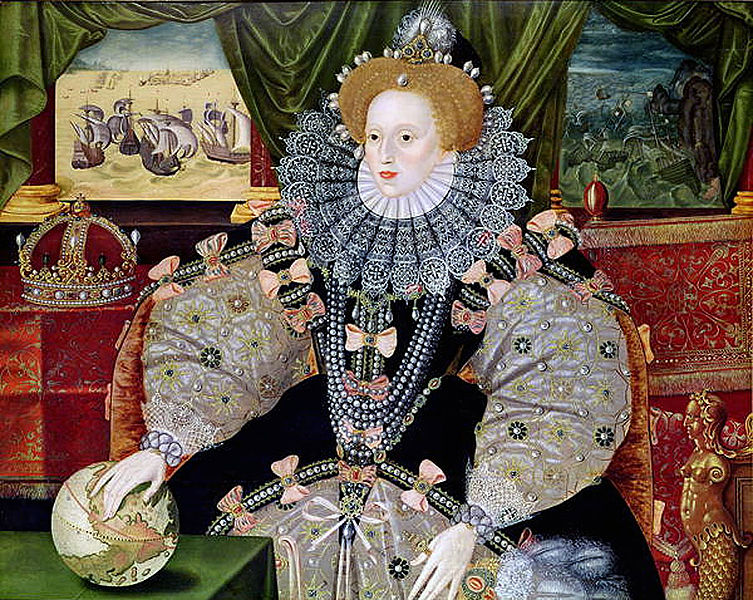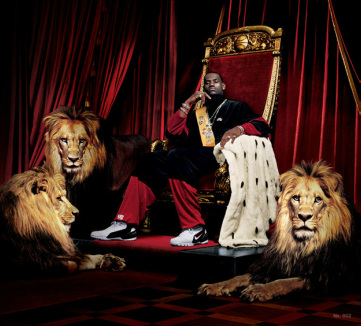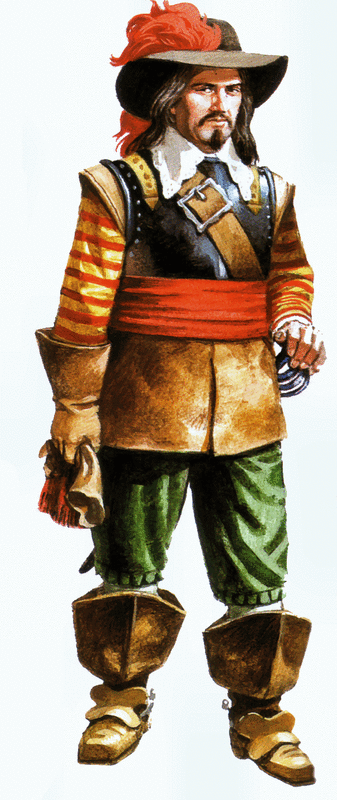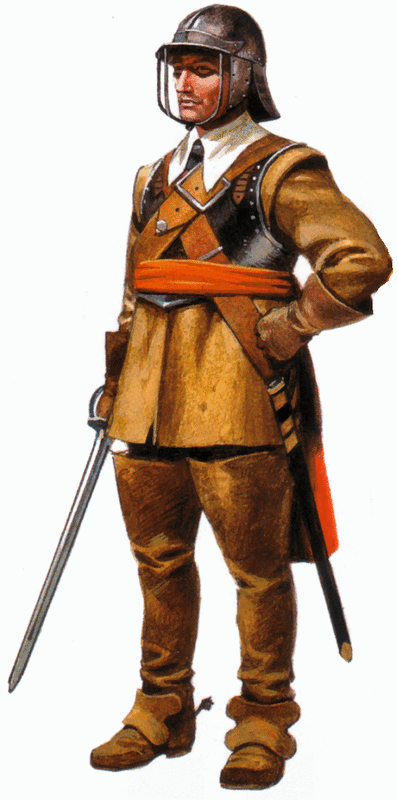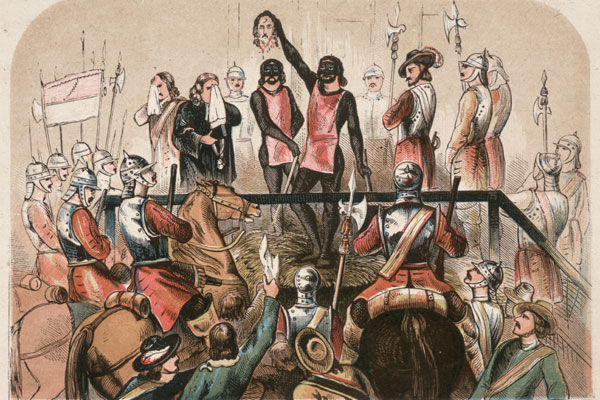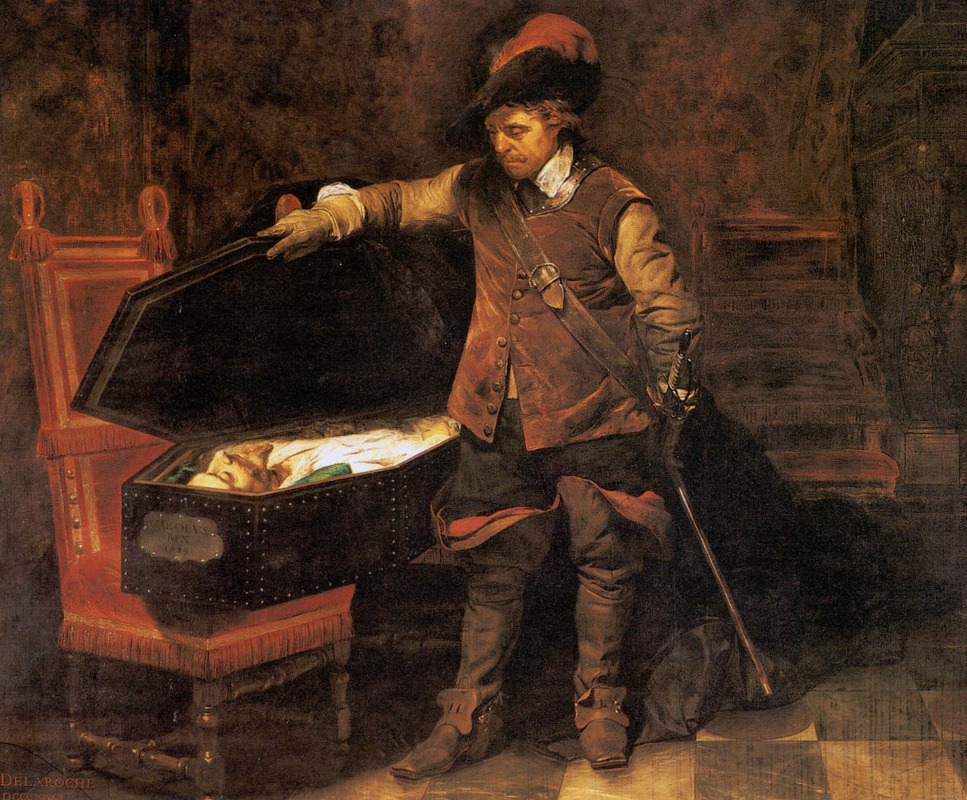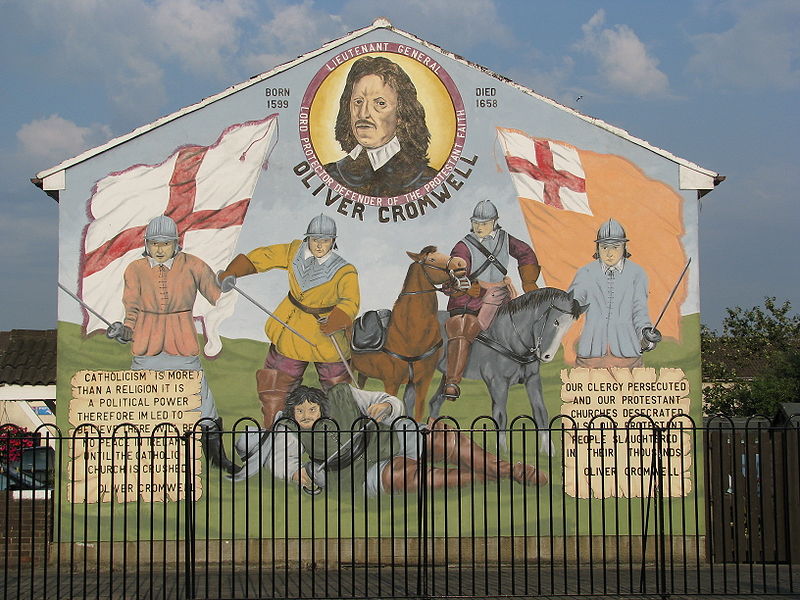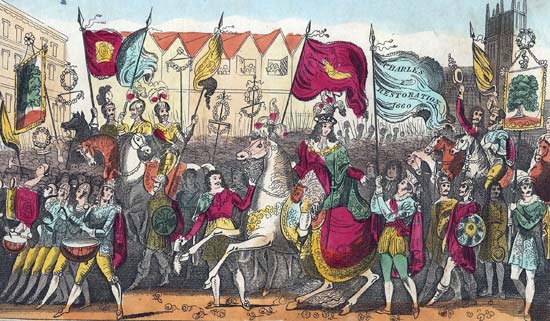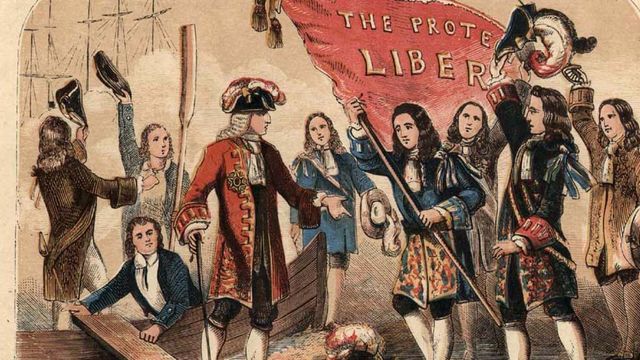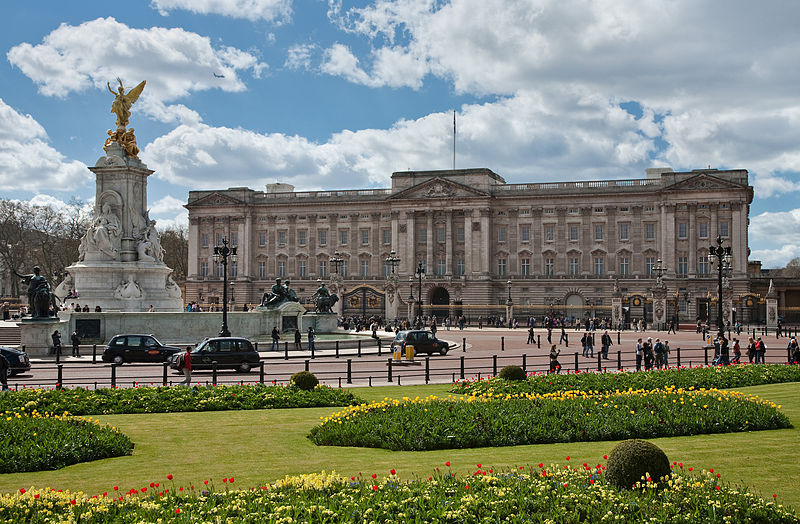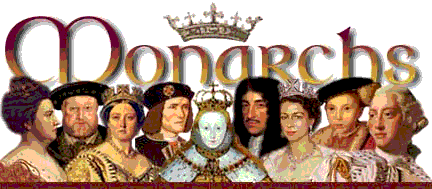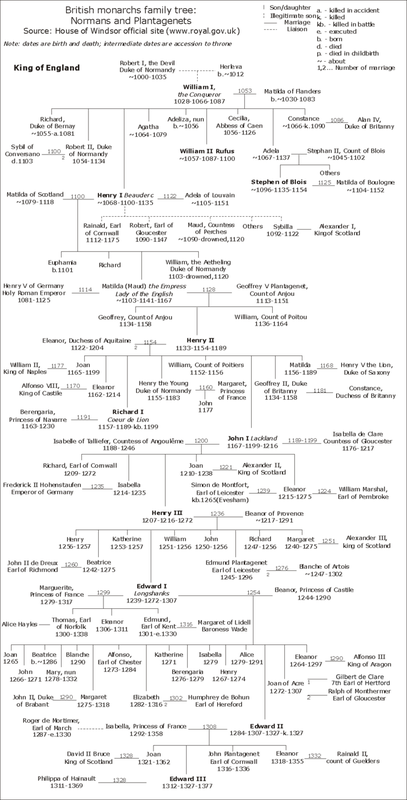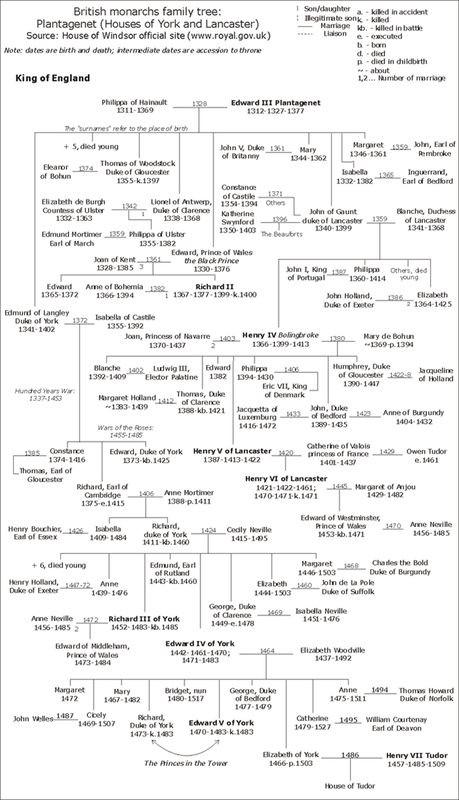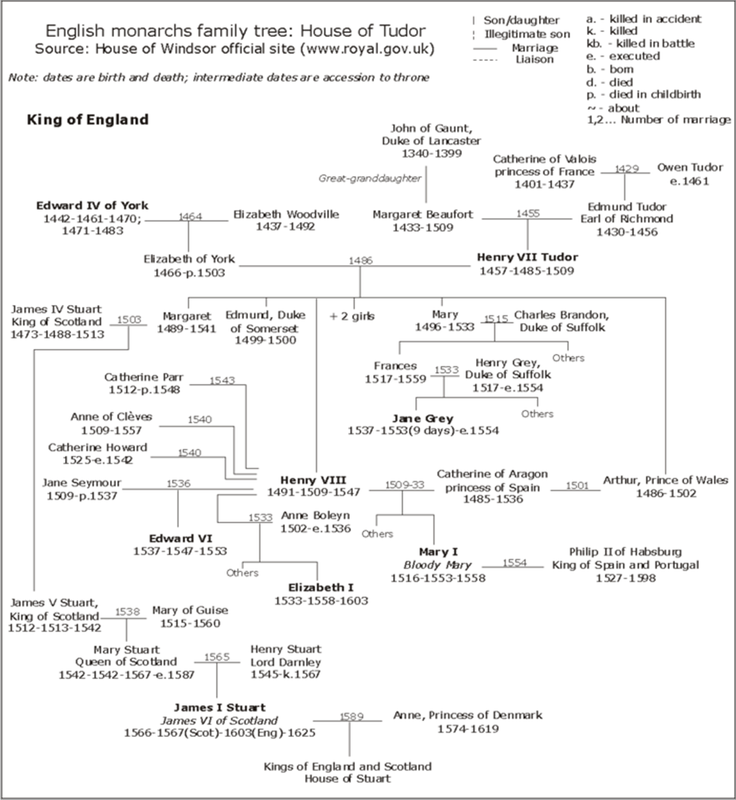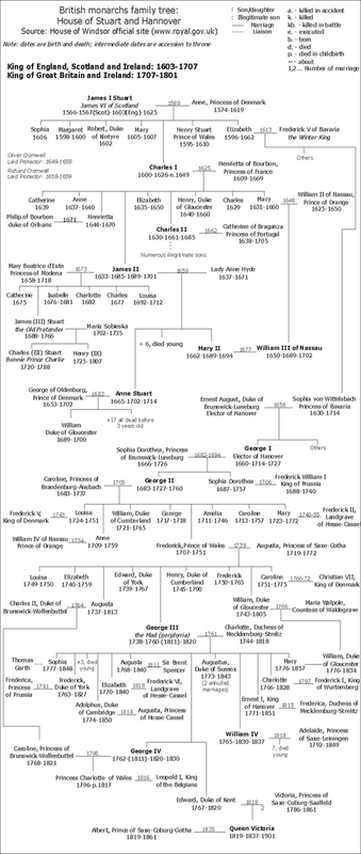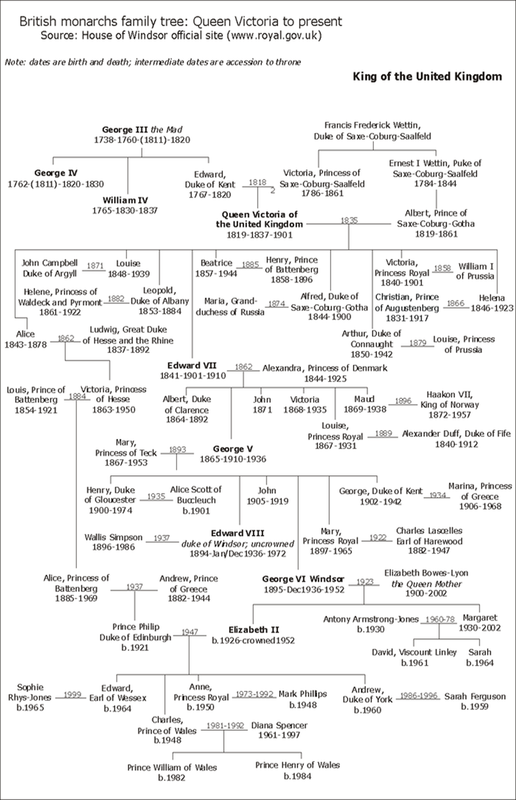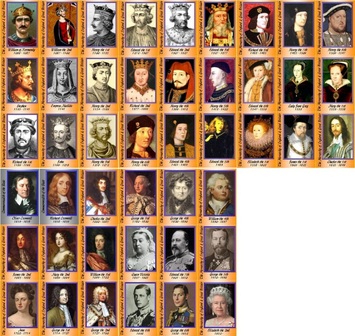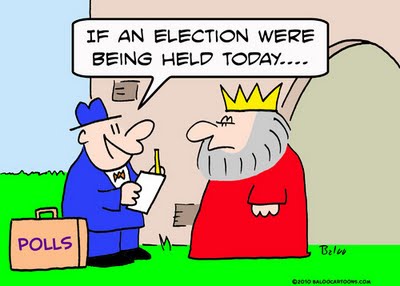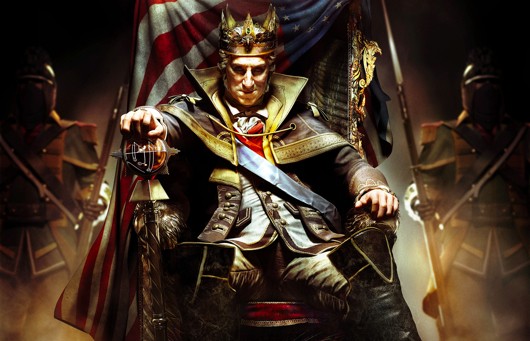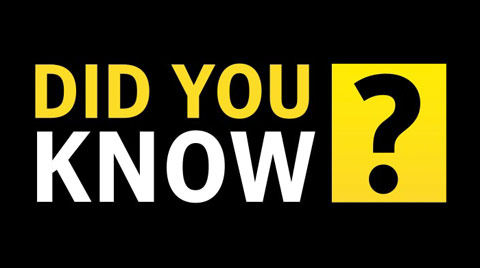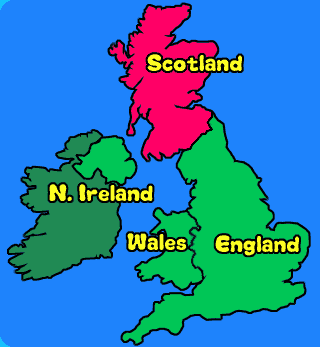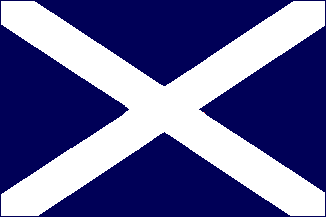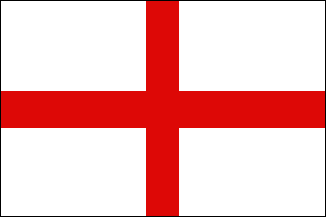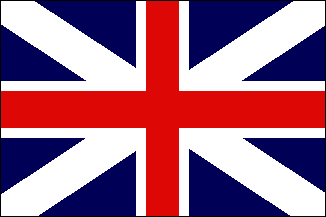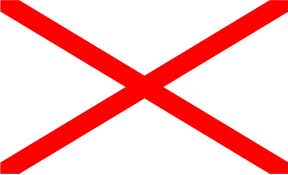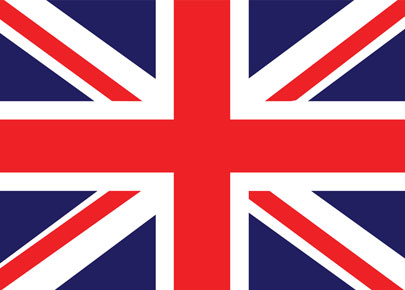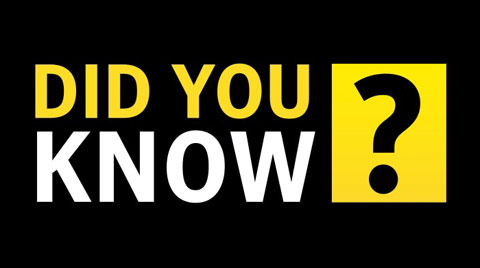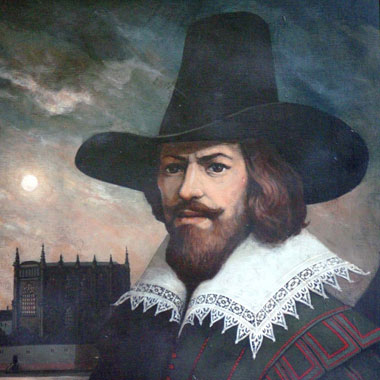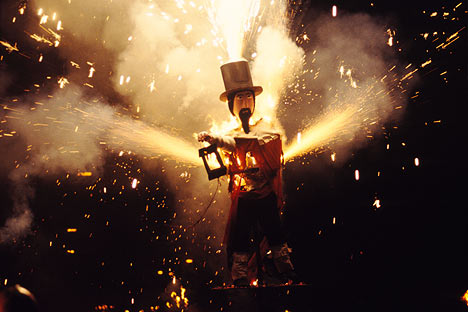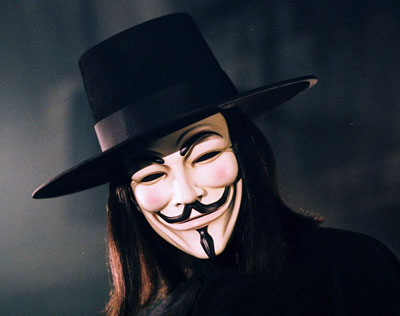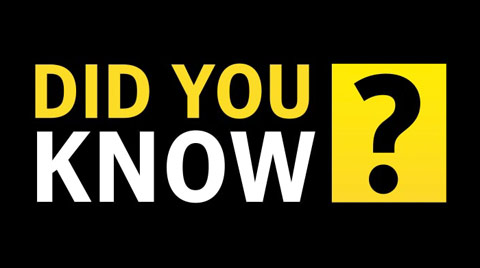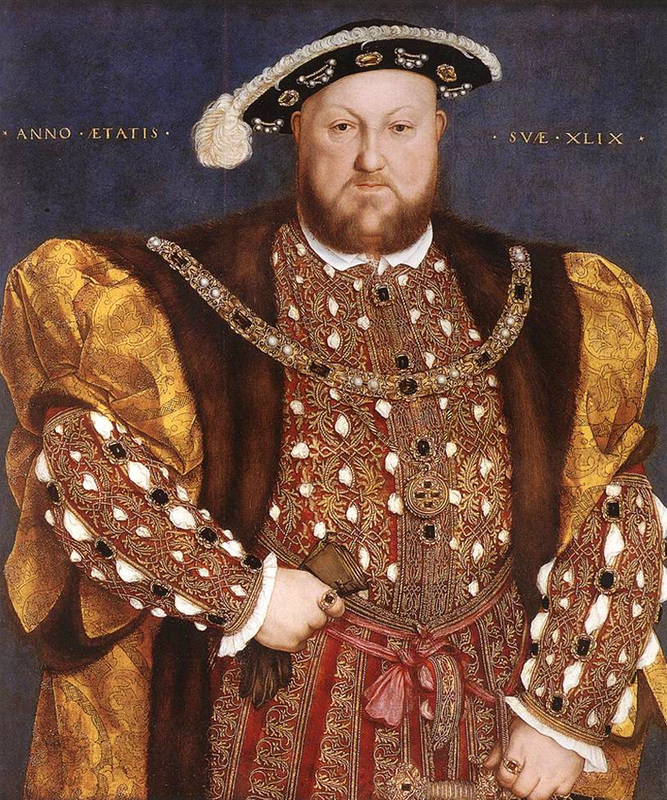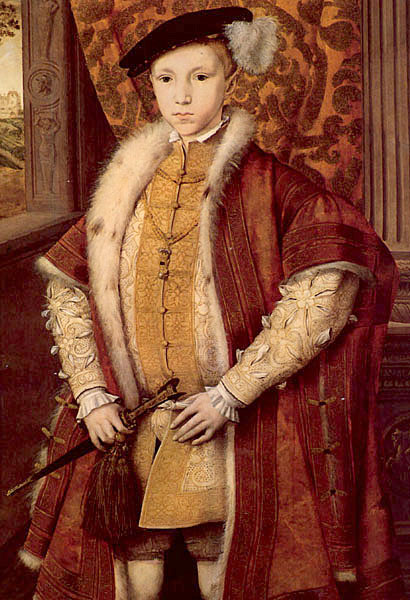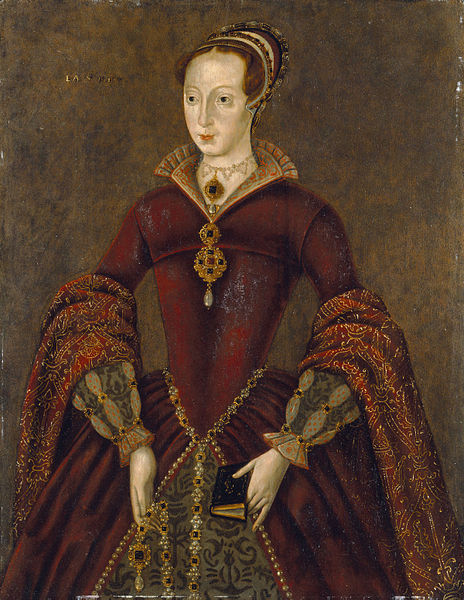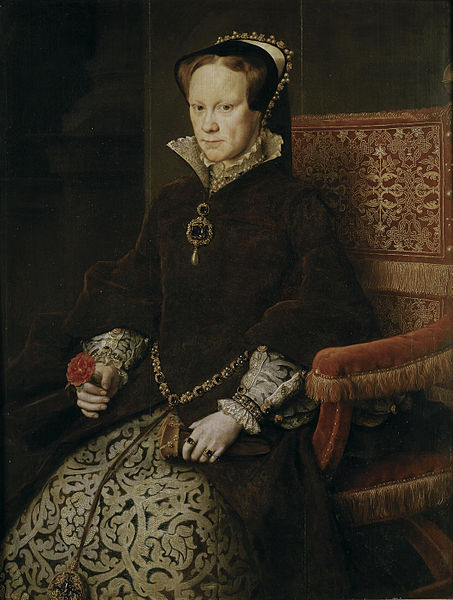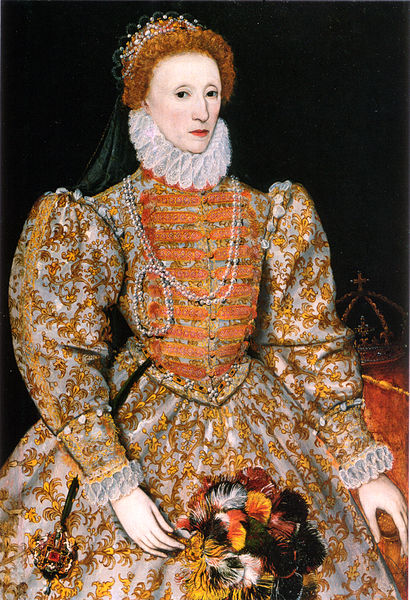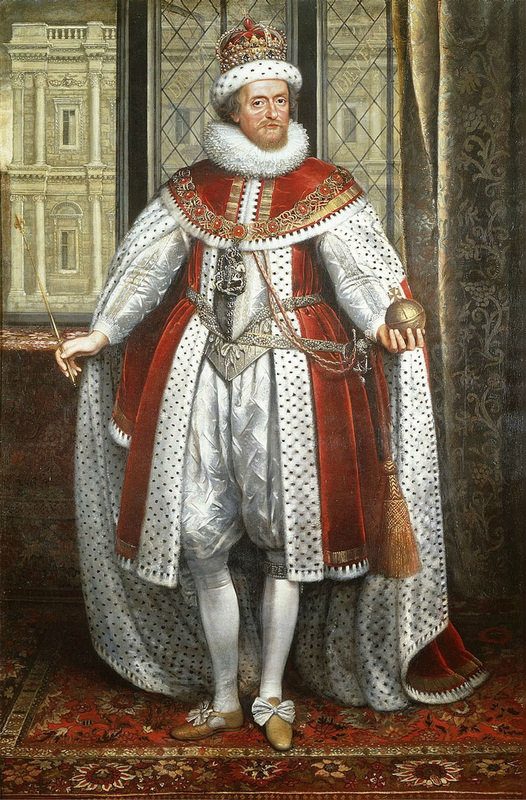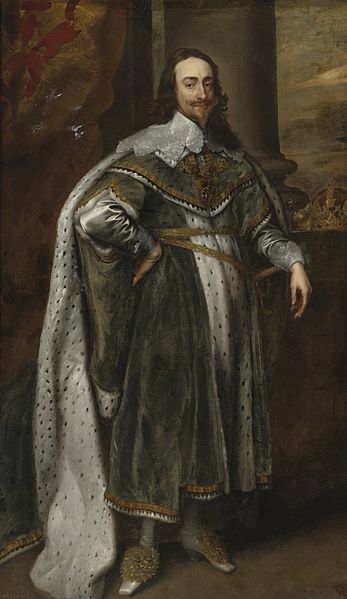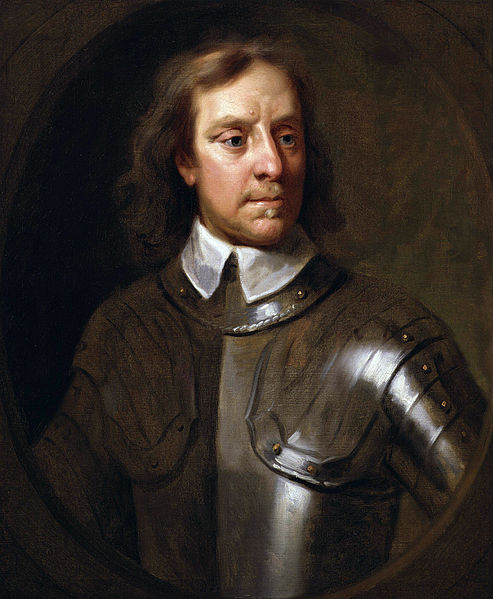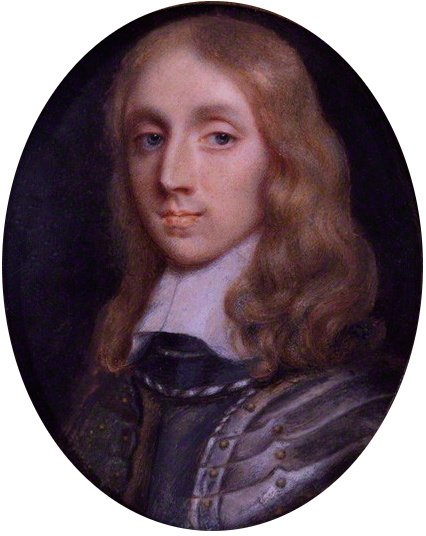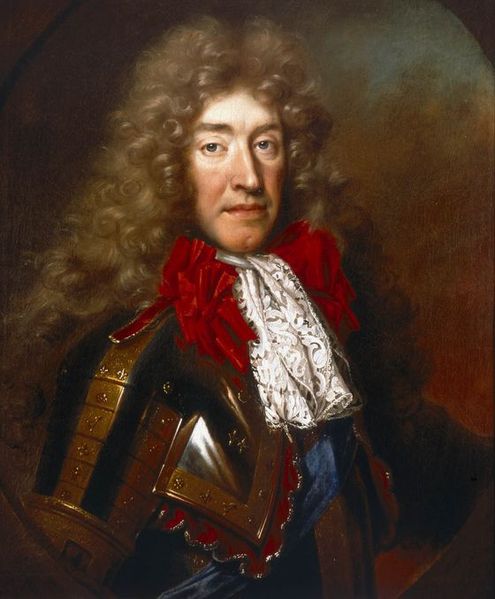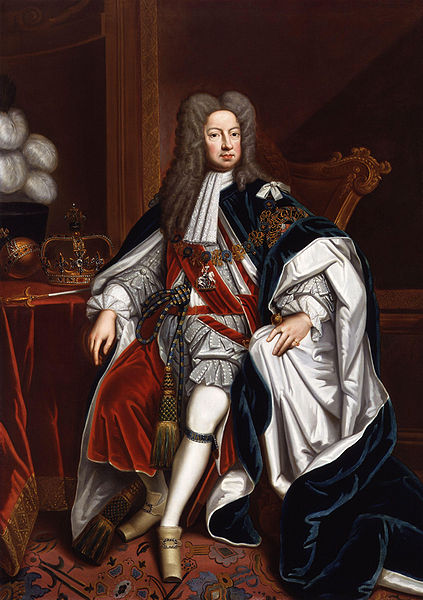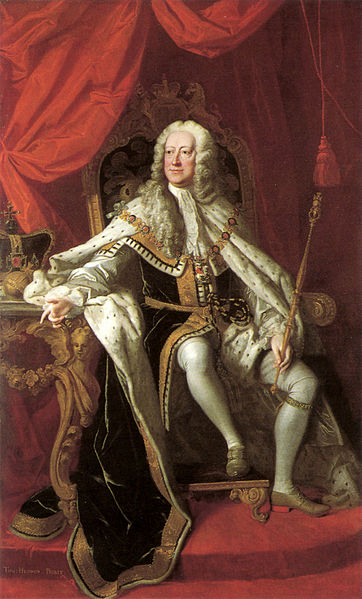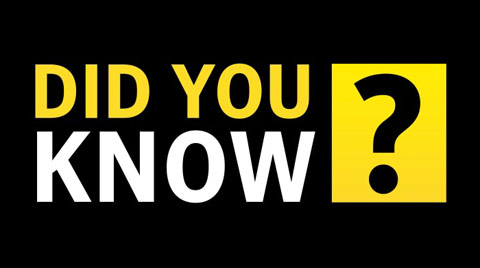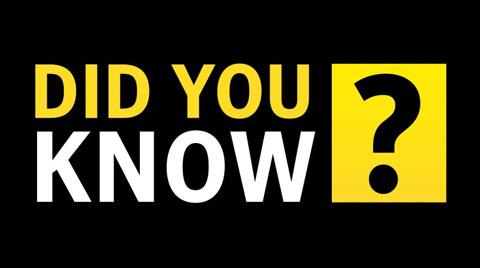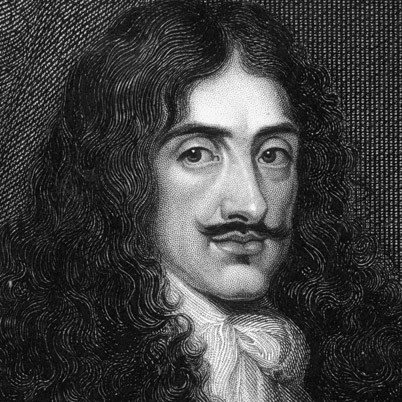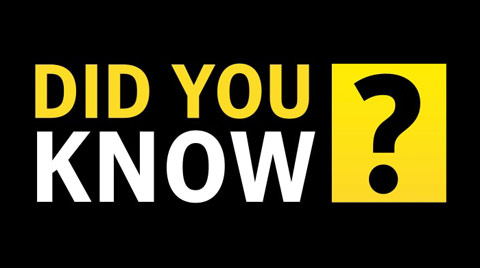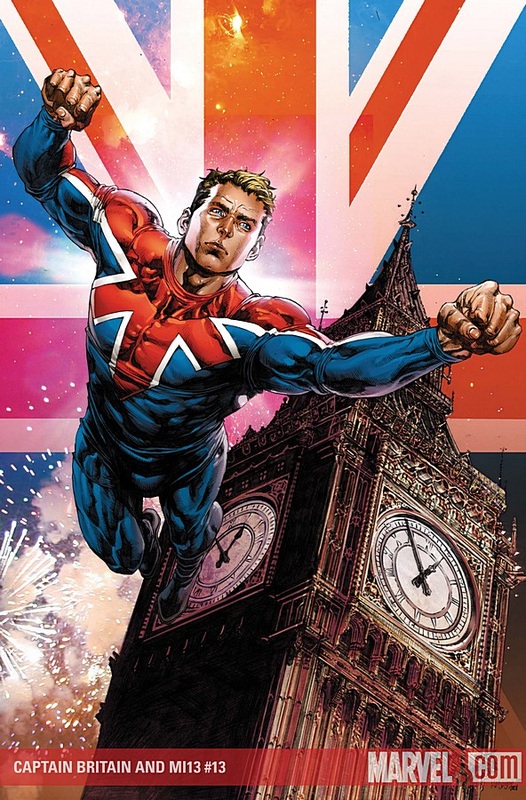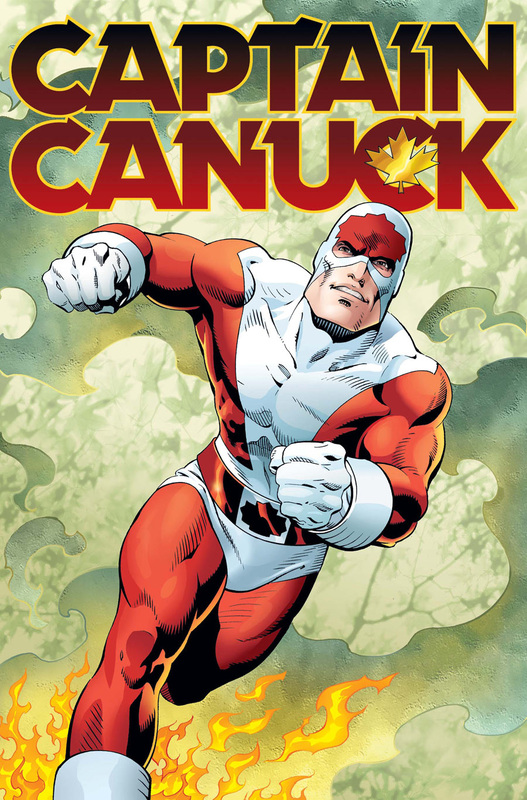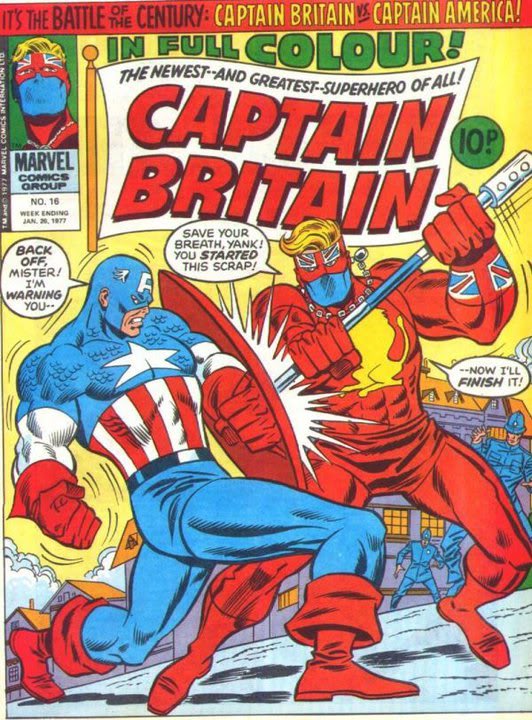Scramblin' thru... Mother England
Yea England, Yea!!!
Good ol' King Henry VIII was a greedy monarch. His desire to have a son – and the Catholic Church's refusal to grant him a divorce – resulted in his reorganization of the English Church (also called the Anglican Church). Of course, in the process of getting what he wanted (a divorce and, three wives later, a son), he delivered the Protestant Reformation to England's doorstep... the same revolution that had just overhauled religion in Europe. In the end, one man's greed would alter an entire nation's history.
Henry Makes a MessHenry's new Anglican Church developed a Protestant swagger, but it kept many of its old school Catholic tendencies. Still, it did put pressure on Catholics to accept changes to their faith or wind up being phased out. This began a Protestant vs. Catholics rivalry in all facets of English society. Still, contrary to what maybe Henry had hoped, he was mortal... and he died in 1547. This made his 9-year-old son the new king of England... Edward VI.
Henry was a "worst-case-scenario" kind of guy, which is why, prior to death, he had installed a Regency Council to govern until Edward was "of age" (or roughly 14). (Never mind the fact that Henry had two "of age" daughters: Mary via his first wife, Catherine of Aragón and Elizabeth via his second wife, Anne Boleyn.) Edward's mother had been Henry's third wife, Jane Seymour. Thus, King Edward VI's uncle Edward Seymour ruled England for the 9-year-old. Seymour favored Protestants... which meant the boy-king also favored Protestants. (Children are soooo easy to manipulate. Despite all of Henry's work to secure a male heir, Edward VI died at age 15 of tuberculosis, arsenic poisoning, or syphilis... and without any children. There was a general concern among those in the higher ranks about having a Catholic as ruler, so before he died, Protestant Edward declared his sisters Mary and Elizabeth "bastards" (he was classy, like his father)... and leapfrogged succession straight to Lady Jane Grey, who was a Protestant and Edward's first cousin once removed. England Gets "Bloody"Jane, against her wishes, was declared Queen of England. Of course, Henry's oldest daughter Mary "disagreed" with this decision. Understandably, Mary had "Daddy Issues" – after all, her father essentially invented divorce just to get rid of her mother – and she was next in line on Henry's "worst-case-scenario" succession plan should Edward die before having any children.
And whatever Mary wants... Mary gets. Mary wanted to be queen... so Mary marched into London, had Jane arrested after a reign of 9 days, and put her in the Tower of London. (Lady Jane Grey was beheaded a year later.) Queen Mary I was now England's monarch (and everybody just shut their mouths). Queen "Bloody" Mary was a Catholic who tried to roll back the tide of religious change by having 300 Protestants executed and chasing others into exile. Married to Spain's King Philip II, she died of ovarian cancer 5 years later in 1558... and without any children. England Goes VirginHenry's "worst-case-scenario" was coming true.
Of course, in the inconceivable event that both Edward and Mary should die childless... Elizabeth, Henry's second child, would become queen. Queen Elizabeth I tried to resolve differences within the Anglican Church and undo some of the damage done by Mary. (Elizabeth did kill a few unruly Catholics, though, for good measure.) During her 45-year reign, she remained unmarried, having turned down Philip II's marriage proposal– yes, the same Philip that had been married to Elizabeth's half-sister Mary. This resulted in Philip throwing a hissy-fit and sending out his vaunted (and Catholic) Armada to crush Protestant England. It didn't work, and Elizabeth's victory only helped to cement her legacy as England's greatest monarch. Known as "The Virgin Queen" because she never married nor dabbled in the affairs of the flesh (which was questioned by many), Elizabeth died in 1603... without children. There was now a fairly major issue with succession. According to Henry's "doomsday' plan, Fraces Grey (his niece) would become queen should Edward, Mary, and Elizabeth all die without heirs. The one problem: Fraces died 44 years earlier (in 1559). No problem, right? Henry had a plan for this. So, should Edward, Mary, Elizabeth, and Fraces Grey all die... next up would be Fraces' daughter, Lady Jane Grey. The one problem: Jane was missing a head – and had been executed by Mary 49 years earlier (in 1554). Now what?! Henry's will said that Elizabethwas to be succeeded by the descendants of his younger sister, Mary Tudor. The Scottish descendants of his oldest sister, Margaret Tudor, were NOT to be included. Henry, like most true-blooded Englishmen, hated Scotland (that William Wallace thing really fouled up the whole English-Scottish relationship). If the line went through Mary, then Lady Anne Stanley should have been the next queen. Instead, Elizabeth picked her ally (and close friend), King James VI of Scotlandon her deathbed. (It was often said that "Elizabeth was King: now James is Queen.") The Tudor Dynasty was over. The purpose of Henry's divorce was to ensure that the Tudors would rule forever. (Of course, if by forever Henry meant 118 years, which it did from 1485-1603, then, yes, it lasted "forever"...) James was the grandson of Margaret Tudor, Henry's oldest sister. The English crown was now in the hands of a Scot. (Not a bad way to get even with "daddy"!) England Goes ScottishJames was the king of Scotland and called "James VI". (However, he became known as "James I" in England.) He was instantly greeted with religious problems in England as the Puritan/Catholic problem spiraled out of control. Puritans demanded further restrictions on Catholics. James was unwilling to do all that they demanded, except he did issue the King James Bible, which fixed mistakes made by Henry VIII when he had translated the Bible from Latin to English. (Hey, it's not easy translating the Bible... especially when you're too busy breaking all of the Commandments...)
In response to some anti-Catholic laws, a Catholic (who, ironically, was Protestant at birth) named Guy Fawkes opted for the most logical conclusion: to blow up King James and Parliament. Fawkes' plot was discovered on November 5, 1605... along with 36 barrels of gunpowder in a cellar under Parliament. (One barrel could've made things interesting in England... 36 barrels would've made two Englands.) Fawkes and his crew were tortured, hanged in 1606, and then drawn and quartered. Because of that, Guy Fawkes' Day is celebrated every November 5th in England. Taking the place of Halloween, children celebrated by burning effigies of Guy Fawkes, setting off fireworks, and having lavish parties. Despite this attempt on his life, the first permanent English colony in Virginia was founded in 1607... and aptly named "Jamestown". After James died of kidney failure in 1625, his second son became King Charles I. (His oldest son had died at age 18, which made Chalres the new heir to the throne.) Charles' Catholic wife and anti-Puritan behavior upset many, and, as such, the back-and-forth nature of religious persecution sent many to America. England Goes Civil (War, that is...)As settlers set up their American colonies, a major political and religious conflict began in 1640 in England and lasted for two decades. Called the English Revolution (1640-1660), the immediate cause was Charles I's attempt to impose the Anglican liturgy in Scotland. And why not? As king of both countries, you can't blame the guy for trying to keep things the same whether he was worshipping in Scotland or England.
Scotland disagreed. And, in true Scottish fashion, the Presbyterian Scots rioted and raised an army to defend their church. In 1640, they took over the Northern counties of England. (The last person to take over Northern England was William Wallace... and we all know how much England enjoyed that chapter in their history.) Charles summoned Parliament and asked it to raise money to drive back the Scottish. (Parliament had two houses: House of Lords & House of Commons.) Parliament told Charles if he wanted money, he'd have to give in to reforms they wanted. Charles, basically, told them to stick it where the sun doesn't shine... which resulted in these quarrels becoming an armed conflict in 1642. The nation soon found itself split into two groups. Those who supported King Charles, which included most of the House of Lords, were called the Cavaliers. Those that supported Parliament, which included most of the House of Commons, were called the Roundheads (because they had closely-cropped hair instead of long, curly hair... or because they were in the bathroom when all the cool team names were being picked). The Roundheads were led by Oliver Cromwell, an outspoken Puritan member of Parliament. After many victories, the Roundheads and Cromwell took control and proceeded to purge Parliament of its Presbyterians. (Say that 3 times fast...) What was left of Parliament became known as the Rump Parliament. The Rump had an agenda... they soon charged King Charles I with treason, found him guilty, and then lopped off his head in 1649. (He remains the only English monarch to be beheaded... if you don't count Lady Jane Grey as a true monarch. But I do. After all, the U.S. counts William Henry Harrison's 1-month Presidency, so, sorry, England, she counts. She counts.) England Goes CommonThe Rump Parliament then abolished the monarchy and the House of Lords... and declared England a Commonwealth. A Commonwealth is when a "commoner" rules.
That commoner was Cromwell. (Convenient, right?) After losing his patience with the Rump, Cromwell dismissed it and accepted the Instrument of Government, England's first written constitution. The document created the Protectorate, which consisted of a Lord Protector and a House of Commons. Cromwell became the first commoner to rule and served as Lord Protector. He died in 1658 and his son Richard became Lord Protector. Richard only served for a year before things fell apart... again. England Gets Regal... AgainIn 1658, Oliver Cromwell died, and his son Richard became Lord Protector. The English army was unhappy with this decision. To them, Richard was "just a country farmer". In 1659, the generals forced Richard to "retire" and brought Charles II, the son of dead Charles I, back to England and made him king. (I'm sure that wasn’t an awkward moment... "Heeey, yeeeahh... sorry about your Dad..." )
This started the English Restoration (1660-1685) and the "restoring" of the monarchy. To help the country heal, Charles II and Parliament granted a pardon to anyone who supported the Commonwealth. However, Charles retained the right to punish those people who executed his father (known as the "Regicides"). Those Regicides who were still living were brought to trial. Thirteen were found guilty, hanged, and drawn and quartered. Even the body of Oliver Cromwell was exhumed and hanged in chains. (That's a logical reaction...) Charles and Parliament next went after the Puritans. While he didn't return to Catholicism, he did outlaw many Puritan acts of worship. As a result, more Puritans fled to America. In 1665, England became involved in a war with Holland. The war did not go well, and the Dutch defeated the English. (It had to have been their wooden shoes and windmills. England was too busy laughing at them to fight...) Charles feared that the French might invade next. (One reason for this rivalry centered around religion: England was Protestant; France was Catholic.) To help avoid this situation, Charles decided to seek out a "secret" treaty with France's King Louis XIV. Louis XIV said he would help England... but demanded that Charles become Catholic. Charles agreed... but said he "needed more time" before he told all of England. After all, since Parliament and about 90% of England was Protestant, he continued to keep this secret. But England wasn't dumb. When Charles started acting "nicer" to France and began encouraging the Protestants to stop persecuting Catholics... the people suspected something. Although Charles fathered 14 children... none of them were "legitimate". (Go figure, right?! England finally gets a king that has plenty of kids, but none of them "count"!) This meant his Catholic brother James, would become king. Two political parties formed out of this pending crisis: the Whigs and the Tories. The Whigs favored Parliament, hated the Pope, and urged the exclusion of James from the royal succession. The Tories stood for the rights of the Anglican Church and favored the Monarch. Just before he died, Charles admitted that he was Catholic. His brother became King James II. And only 3 years later, England would again be gripped by revolution England Goes BloodlessThe "born-again" Catholic King Charles II died in 1685 and left the throne to his Catholic brother, James II. James II(known as James VII in Scotland) would be the last Catholic to ever serve as the monarch of England.
Once king, James Scott (one of Charles' illegitimate sons), claimed he should have been king and attacked. He expected that the Protestants in England would join. England didn't want another Civil War, so he was on his own. This "Pitchfork Rebellion" was crushed and Scott beheaded. To prevent future rebellions since just about anybody could, with enough support, overthrow a government back then, James created a standing army. This made people nervous. Then he put Catholics in charge of many of the regiments. This made people mad. The birth of a Catholic male heir to the throne brought about the threat of a permanent Catholic dynasty. Such a threat united Whigs and Tories in opposition to James. The party was "over" for James. In July 1688, Whig and Tory leaders sent a secret invitation to The Netherlands for the Dutch Prince William of Orange and his wife, Mary, to "bring an army of liberation to England". Why did they pick the Dutch? Easy! Mary was the Protestant daughter of King James II... and first-cousins with William. (Also, it's becoming very apparent that the history of England is simply one long tale about people with "Daddy Issues"...) In November 1688, William and his Dutch army arrived. King James' troops deserted, forcing him to flee toFrance. As the overthrow of James didn't require a civil war, it was called the Glorious Revolution or "Bloodless Revolution". Early in 1689, William and Mary became joint sovereigns. But before they became King William III and Queen Mary II, the two had to accept the English Bill of Rights. Protecting freedom of speech during Parliamentary debates, requiring Parliament's consent to tax or maintain a standing army, protecting the right to bear arms, and banning cruel/unusual punishments were all rights that made this document a milestone in the process in which power shifted from the Monarchy to Parliament. (It was also a precursor to the U.S. Bill of Rights of 1791.) With relative "peace" at home... England turned its focus back on America. And "Mom" certainly wouldn't be pleased with what she would find... The English Family TreeHow many of you can sit down and rattle off all of the U.S. Presidents? Now imagine if the U.S. never broke away from England... you'd have to know all of the various kings and queens! (And can you imagine having pictures of every monarch in a classroom like you see done with the Presidents?) This English Family Tree is organized by the ruling dynasties. Click each picture for a larger version, unless you like squinting.
|
England? Britain? Great Britain? United Kingdom? Make up your mind! Which is which?! People (especially Americans) often confuse the various names for this region of the world.
Today, this area of the world is officially called the "United Kingdom of Great Britain and Northern Ireland". Great Britain refers to the largest island in the cluster of islands known as the British Isles. England is the largest and most populous division of the island of Great Britain, making up the south and east. Wales is on the west, and Scotland is to the north. Northern Ireland is located in the northeast corner of Ireland, the second largest island in the British Isles. The capital of the United Kingdom is the city of London, England. "United Kingdom", "UK", and "Britain" can all be used when discussing the entire nation (England, Scotland, Wales, and Northern Ireland). The use of the term "Great Britain" to refer to the entire nation is now outdated because the term "Great Britain", properly used, refers only to the island of Great Britain, which includes only England, Scotland, and Wales, but leaves out Northern Ireland. The term England should NEVER be used to describe the UK, because England is only one part of the island. It should only be used when referring to JUST England. It is always correct to call people from England, Scotland, or Wales "British", although people from England may also properly be called "English", people from Scotland "Scottish", and people from Wales "Welsh". Beginning in the 1500s, the British Isles underwent a series of political changes that eventually led to the establishment of the "United Kingdom of Great Britain and Ireland" in 1801. The creation of the United Kingdom brought England, Scotland, Ireland, and Wales under the rule of a central government headed by a common monarch (now the Prime Minister) and administered by a single Parliament. When Ireland (with the exception of its 6 northern counties) achieved its independence in 1922, the Kingdom was renamed the "United Kingdom of Great Britain and Northern Ireland". The UK flag, commonly called "The Union Jack" was created by adding the flags of the different countries together, as shown below. The effigy that is burned on Guy Fawkes' Day is called
"a guy". This led to the use of the word "guy" as a term of general reference for a man. The word "guy" soon replaced the terms "fellow", "bloke", "chap", and others. Of course, while burning "a guy", children often recite this famous poem: Remember, remember the fifth of November, the gunpowder treason and plot, I see no reason why gunpowder treason should ever be forgot. Guy Fawkes, Guy Fawkes, 'twas his intent to blow up the King and the Parliament. Three score barrels of powder below, Poor old England to overthrow: By God's providence he was catch'd With a dark lantern and burning match. Holloa boys, holloa boys, make the bells ring. Holloa boys, holloa boys, God save the King! Here's a rundown of the English Monarchy from King Henry VIII to the evil King George III. By the end of it, you'll be quite thankful that we elect our leaders...
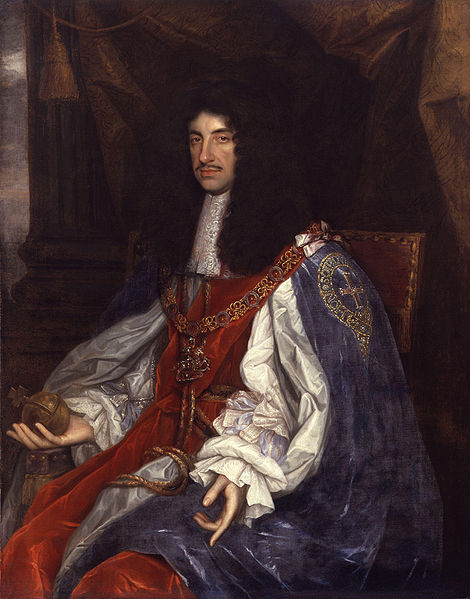
King Charles II lived from 1630-1685 and ruled England, Scotland, and Ireland from 1660-1685. He was restored to the throne after the Commonwealth failed. (His father was King Charles I.) None of his 14 kids were legitimate, so the throne went to his brother, James. [Click picture for a larger version.]
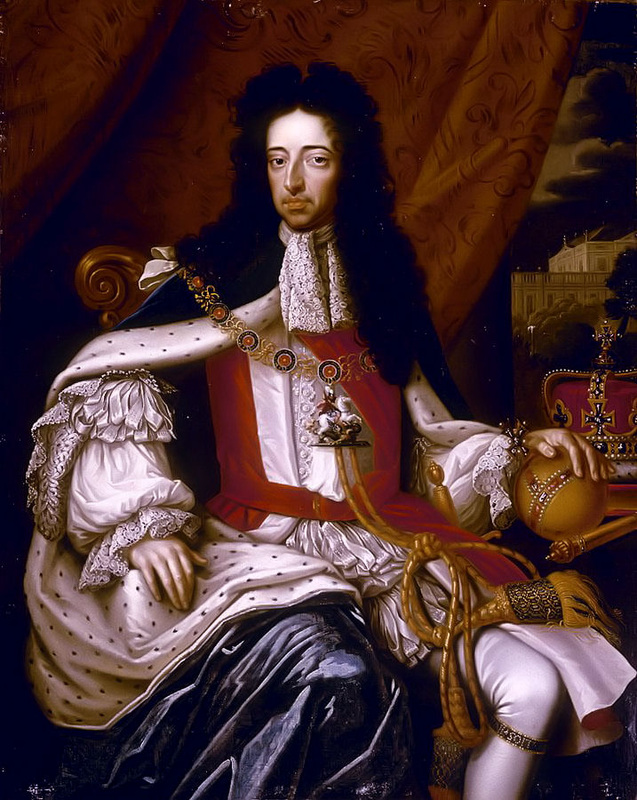
King William III lived from 1650-1702 and ruled England, Scotland, and Ireland from 1689-1702. He ruled jointly with his wife, Mary, who was King James II's oldest daughter. Because he and Mary didn't have any kids, the throne went to Anne... James II's younger daughter. [Click picture for a larger version.]
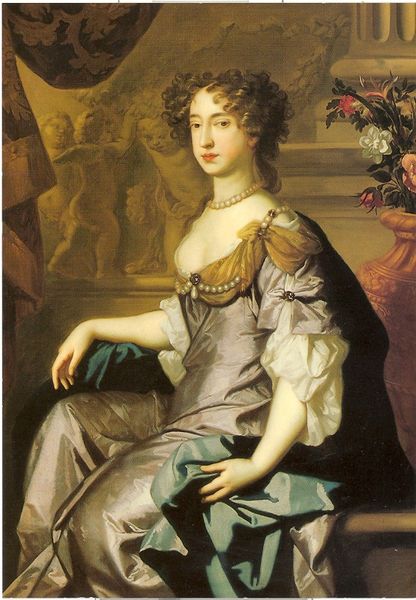
Queen Mary II lived from 1662-1694 and ruled England, Scotland, and Ireland from 1689-1694. She governed jointly with her husband, William, who was also the ruler of The Netherlands. Because she and William didn't have any kids, the throne went to her younger sister Anne. [Click picture for a larger version.]
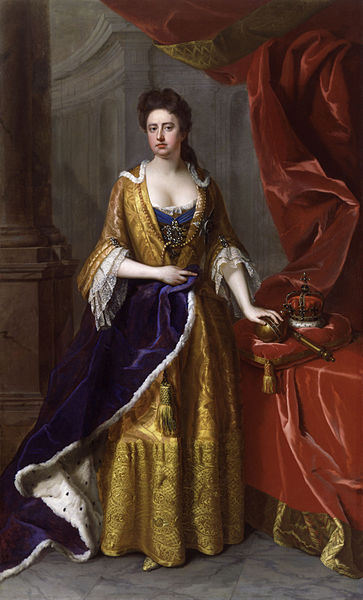
Queen Anne I lived from 1665-1714 and ruled England, Scotland, and Ireland from 1702-1714. (In 1707, the Act of Union merged England Scotland into the Kingdom of Great Britain, which meant she was now the Queen of Great Britain and Ireland.) Despite 17 pregnancies, she died without any surviving kids, so the crown went to her second cousin, George. [Click picture for a larger version.]
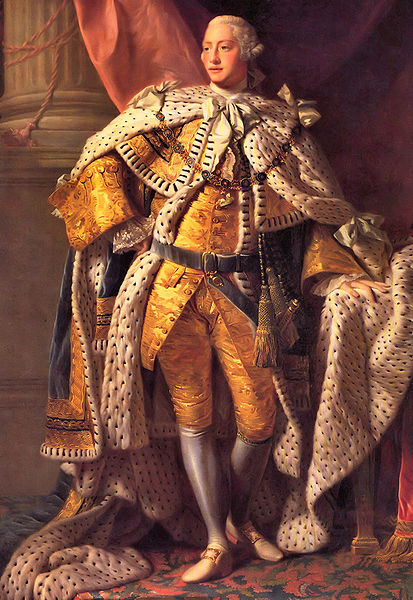
King George III lived from 1738-1820 and ruled Great Britain and Ireland from 1760-1820. (In 1801, Ireland merged with the rest to form the United Kingdom of Great Britain and Ireland, or, simply, the United Kingdom.) Americans all know about King George III... he was the monarch in charge during the American Revolution and the War of 1812. Yup... he ended with an 0-2 record against his former colonies! When he died, the throne went to his son, George, but nobody in America cares since we had won our independence in 1783! [Click picture for a larger version.]
After the restoration of the monarchy in 1660, Oliver Cromwell was declared guilty of regicide (murder of a king), and his corpse was
removed from its tomb, dragged through the streets... and re-executed. A few hours after his hanging, his body was taken down and his head chopped off. The head was then taken to Westminster Hall to be placed up on spikes as a warning to others. It remained there for... 27 years, when it fell down during a strong storm. A patrolling sentinel found it and took it home; his daughter sold it to a Cambridgeshire family and soon the head began to pass through various hands. It was placed in traveling exhibits, and people paid to see the head of the man who had cut off the head of a king. The head ended up being donated to Sidney Sussex College, Cromwell's old college, where it is today. 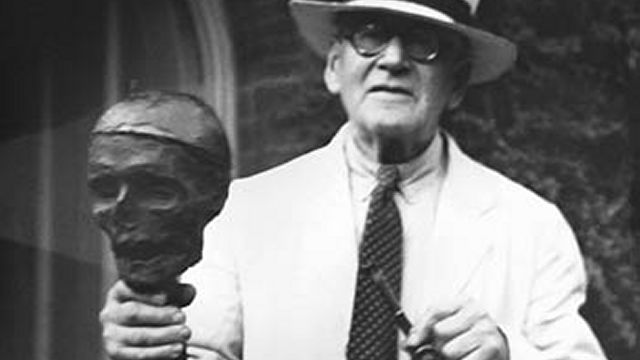
Forensic tests confirmed that this head was Cromwell’s head. It remained remarkably well preserved, thanks to its embalming after his initial death (you know, before he was re-executed). You can even see the depression left by the wart he had above his eye. In addition, tests showed Cromwell’s brain was about twice the average adult male size. That probably just made the head extra bouncy for when they were kicking it through the streets... [Click picture for a larger version.]
As history shows, King Charles II had 14 illegitimate children with anything that had a heart beat. (Big goose egg... "0" kids with his wife.) This clearly indicates that His Majesty, well, "got around". Because of his adventures in the sheets, Charles asked the Earl of Condom, a doctor that hung out with the king, to create a product that he could use to protect him from syphilis. (Apparently pregnancies wasn's his concern...) The doctor (did anyone notice his name?) came up with an oiled sheath made from sheep intestine. The new device did not work overly well in preventing disease and additional pregnancies... which is a problem for a condom. What caused the problem? King Charles II reused his condoms. Yeaaaaa... not supposed to do that.
The origin of the word "condom" is still uncertain. Folklore attributes the invention to Charles II's "Dr. Condom", but, it is more likely that the name derives from the Latin word condus, which means "receptacle". Captain Britain is a fictional superhero that first appeared on October 13, 1976. He upholds the laws of Britain and got his powers came from the legendary magician Merlyn (of King Arthur lore). The character was intended to be a British equivalent of Captain America. One thing got in the way of that: he's British.
But don't worry... it gets worse... there is a Captain Canada (a.k.a. Captain Canuck). Annnnnd that's why I stopped reading comics a long time ago. |

